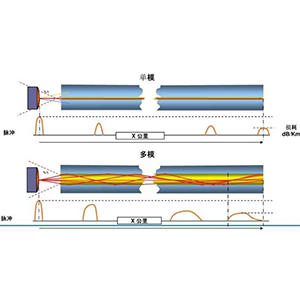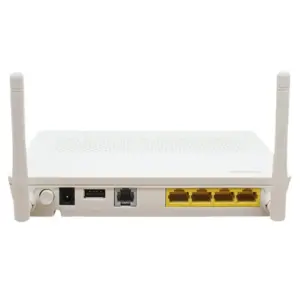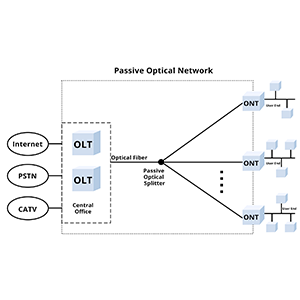Thank you for choosing to read this article. Today I will introduce you to fiber optic network cards and their important role in computer networks. The fiber optic network card is a network interface card specially designed for high-speed and long-distance data transmission. It has excellent performance and reliability and plays an important role in modern network communications.
Overview of fiber optic network cards
Fiber Optic Network Interface Card is a network interface card used to connect computers or other devices to optical networks. It is a network interface specially designed for optical fiber communication, transmitting data signals through optical fiber.
Fiber optic network cards play an important role in computer networks, and their main functions include the following aspects:
-
Fiber optic signal conversion: The fiber optic network card realizes data transmission between the computer and optical fiber by converting electrical signals into optical signals. It converts the digital data generated by the computer into optical pulse signals, transmits them through optical fibers, and at the same time converts the received optical signals into electrical signals for computer processing.
-
High-speed data transmission: Fiber optic network cards can support high-speed data transmission. Due to the characteristics of optical fiber transmission media, fiber optic network cards can provide higher bandwidth and transmission speeds, far exceeding traditional copper cable network cards. This makes fiber optic network cards very important in scenarios that require large-capacity data transmission and low latency.
-
Long-distance transmission: Fiber optic network cards can achieve long-distance data transmission. Compared with copper cable transmission, optical fiber transmission has lower signal attenuation and interference, and can maintain signal quality over longer distances. Fiber optic network cards make long-distance data transmission possible and are suitable for cross-floor, cross-campus or cross-city scenarios that require long-distance connections.
Advantages and features of fiber optic network cards
Fiber optic network cards have many advantages over traditional copper network cards. These advantages make fiber optic network cards perform well in environments with high speed, long-distance data transmission and high signal quality requirements. The following are the main advantages of fiber optic network cards:
-
High speed: Fiber optic network cards can support higher data transmission rates. Due to the fast transmission speed of optical signals, fiber optic network cards can provide higher bandwidth and transmission speed to meet the needs of large-capacity data transmission. In contrast, the transmission speed of copper network cards is affected by signal attenuation and electromagnetic interference, which limits its transmission rate.
-
Low latency: Fiber optic network cards have low transmission latency. The transmission speed of optical signals in optical fibers is very fast, and optical fiber network cards can transmit data in a shorter time, thus reducing transmission delays. This is important for applications that require real-time data transfer and low latency, such as online gaming, video conferencing, and financial transactions.
-
Anti-interference ability: Fiber optic network cards have strong anti-interference ability. Fiber optic transmission is not affected by electromagnetic interference because optical signals are transmitted in the form of light, not electrical signals, in optical fibers. This allows the fiber optic network card to maintain high data transmission quality in high electromagnetic interference environments without being affected by adjacent cables or electronic equipment.
Fiber optic network cards also have some features that further enhance the flexibility and adaptability of their applications:
-
Support full-duplex communication: The fiber optic network card supports full-duplex communication, that is, it can send and receive operations at the same time. This means that it can achieve two-way data transmission at the same time, improving the throughput and efficiency of the network.
-
Multi-mode/single-mode fiber optic interface: The fiber optic network card can support multi-mode fiber optic and single-mode fiber optic interfaces. Multimode fiber is suitable for short-distance transmission, while single-mode fiber is suitable for long-distance transmission. This flexibility of fiber optic network cards allows it to adapt to different distances and network needs.
To sum up, fiber optic network cards have many advantages over traditional copper network cards, such as high speed, low latency and anti-interference capabilities. It supports full-duplex communication and can adapt to multi-mode and single-mode fiber optic interfaces, enhancing its flexibility and adaptability in different network environments. These characteristics make fiber optic network cards widely used in application scenarios that require high performance, long-distance transmission and high signal quality.
Application scenarios of fiber optic network cards
Fiber optic network cards have a wide range of application scenarios in many fields. The following are some typical application scenarios:
-
Data center: In large data centers, fiber optic network cards are widely used for high-speed interconnection between servers and network equipment. Fiber optic network cards can achieve high-bandwidth, low-latency data transmission and support fast communication and large-scale data processing within the data center.
-
Enterprise network: In enterprise networks, fiber optic network cards can be used to connect servers, switches, routers and other equipment to achieve high-speed and reliable data transmission. It can meet the needs of enterprises for large-capacity data transmission and network performance, and provide stable network connections.
-
Telecom operators: In the field of telecommunications, fiber optic network cards are widely used in the fiber optic communication networks of telecom operators. It can connect fiber switches, optical terminals and terminal equipment to achieve high-speed, long-distance data transmission. The application of fiber optic network cards in telecommunications networks can support a large number of users to perform high-bandwidth services at the same time, such as high-definition video streaming, online games, and cloud computing.
-
Remote storage: Fiber optic network cards play an important role in remote storage systems. It can connect storage devices and computers to achieve high-speed data transmission and remote backup. Fiber optic network cards can meet applications that require high storage performance and data reliability, such as large-scale data storage, data replication, and disaster recovery.
Fiber optic network cards are important in these application scenarios, especially in the following aspects:
-
High bandwidth requirements: Fiber optic network cards can provide higher bandwidth to meet the demand for large-capacity data transmission. In applications that need to process large amounts of data or high-definition multimedia content, fiber optic network cards can provide faster data transmission speeds and a better user experience.
-
Long-distance communication: Due to the characteristics of optical fiber transmission, optical fiber network cards can achieve long-distance data transmission. In network environments that require long-distance connections across floors, campuses, or cities, fiber optic network cards can provide stable, high-quality data transmission.
-
Network security: Fiber optic network cards are critical to network security. Since fiber optic transmission is not affected by electromagnetic interference, fiber optic network cards can provide a safer data transmission channel. In applications that require higher data confidentiality and integrity, such as banks, military and government agencies, fiber optic network cards can provide more reliable network security solutions.
To sum up, fiber optic network cards are widely used in data centers, enterprise networks, telecom operators, remote storage and other fields. It plays an important role in high-bandwidth, long-distance communication and network security, providing high-speed and reliable data transmission solutions for these application scenarios.
Suggestions for selecting and deploying fiber optic network cards
Here are some recommendations and best practices when selecting and deploying fiber optic network cards:
Guidance on choosing a fiber optic network card:
-
Consider network requirements: First, you must understand your own network requirements, including bandwidth requirements, delay requirements, and data transmission distance. Select the performance parameters of the fiber optic network card according to your needs, such as the maximum transmission rate and supported fiber interface types.
-
Fiber optic interface type: Fiber optic network cards have multiple interface types, including multi-mode and single-mode fiber optic interfaces. Multimode fiber is suitable for short-distance transmission, while single-mode fiber is suitable for long-distance transmission. Choose the fiber interface type that suits your network distance.
-
Compatibility: Make sure the fiber optic network card you choose is compatible with existing network equipment. Check the compatibility list of your fiber optic network card to make sure it is compatible with devices such as switches, routers, or servers.
Recommendations and best practices for fiber optic network card deployment:
-
Fiber optic cabling: When deploying fiber optic network cards, reasonable fiber optic cabling is required. Keep the fiber’s bending radius and tension within range, and avoid excessive bending and stretching of the fiber. Use appropriate fiber optic connectors and accessories to ensure reliable and stable connections.
-
Device configuration: When deploying fiber optic network cards, ensure the correct configuration of network devices. According to the guidance provided by the manufacturer, configure the parameters of the fiber optic network card and related equipment, such as speed, duplex mode, and network protocol. Ensure compatibility between devices and correct communication settings.
-
Performance optimization: In order to obtain the best performance, perform some performance optimization operations. Make sure your fiber optic network card’s drivers and firmware are up to date to provide the latest features and performance fixes. Optimize network settings, such as adjusting transmission buffer size and priority, to improve data transmission efficiency and stability.
-
Test and monitor: After deploying the fiber optic network card, perform testing and monitoring to ensure it is functioning properly. Use network testing tools to evaluate the performance of fiber optic network cards and check transmission rate, latency, data integrity, etc. Implement a network monitoring system to monitor the performance of fiber optic network cards and the entire network, and identify and resolve any issues promptly.
To sum up, the selection and deployment of fiber optic network cards requires consideration of factors such as network requirements, fiber optic interface type and compatibility. During deployment, ensure proper fiber cabling, correct equipment configuration and performance optimization, as well as the implementation of testing and monitoring. These guidelines and best practices help ensure proper operation and optimal performance of fiber optic network cards.
The development trend of fiber optic network cards
As one of the key technologies in the field of network communications, fiber optic network cards are constantly developing and evolving. The following are the future development trends of fiber optic network cards:
-
Higher speed: As data demand continues to grow, fiber optic network cards will develop towards higher transmission rates. There are already multiple standards, such as 40Gbps and 100Gbps Ethernet, and higher-speed fiber optic network cards may appear in the future to meet the needs of large-scale data transmission and high-bandwidth applications.
-
Lower power consumption: Power consumption has always been an important consideration in the design of network equipment. Future fiber optic network cards will pay more attention to reducing power consumption to improve energy efficiency and reduce energy consumption. Adopt new chip design and energy-saving technology to achieve lower power consumption levels.
-
Smaller size design: As computing devices continue to shrink, the size of fiber optic network cards will also tend to be smaller. Future fiber optic network cards may adopt more compact designs to accommodate smaller servers, network equipment and mobile devices.
Fiber optic network cards will also be combined with emerging technologies, such as 5G networks, the Internet of Things and cloud computing, to produce a series of impacts:
-
5G network: With the popularization of 5G network, the demand for high-speed, low-latency data transmission will further increase. As an important part of connecting 5G base stations and core networks, fiber optic network cards need to provide higher bandwidth and faster data transmission rates to meet the requirements of 5G communications.
-
Internet of Things: The development of the Internet of Things will lead to a large number of devices being connected to the network, generating massive amounts of data. As a high-bandwidth, reliable data transmission solution, fiber optic network cards will play an important role in the Internet of Things, supporting connection and data transmission needs.
-
Cloud computing: Cloud computing requires large-scale data transmission and processing capabilities. Fiber optic network cards can provide high-speed and reliable data transmission, provide stable network connections for cloud computing, and meet the needs of large-scale data centers and cloud services.
To sum up, the development trends of fiber optic network cards include higher speed, lower power consumption and smaller size designs. At the same time, the combination of fiber optic network cards with emerging technologies, such as 5G networks, the Internet of Things and cloud computing, will further promote its development and play an important role in high-speed, long-distance communications and large-scale data transmission.
Summarize:
In the future, fiber optic network cards will continue to develop to achieve higher speed, lower power consumption and smaller size designs. At the same time, the combination of fiber optic network cards with emerging technologies, such as 5G networks, the Internet of Things and cloud computing, will further promote its development and application.
If you are interested in fiber optic network cards, please consider contacting us, we will provide you with professional advice and support to help you choose the fiber optic network card solution that suits your needs and achieve high-speed, reliable data transmission.
- What are fiber cards?
- What is fiber optic network card?
- What is Internet network card?
- What is my internet card?
- Why card fiber?
- Is fibre a WIFI?
- Is fiber Ethernet or WIFI?




